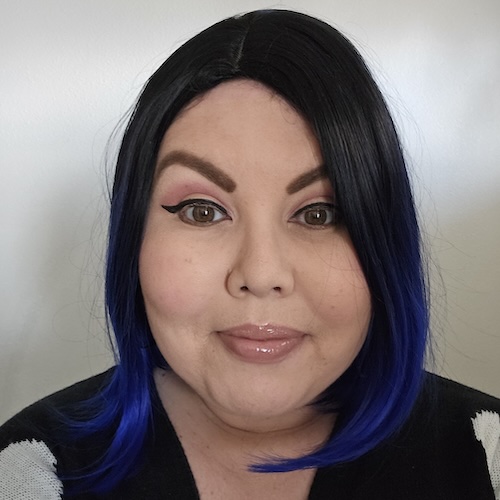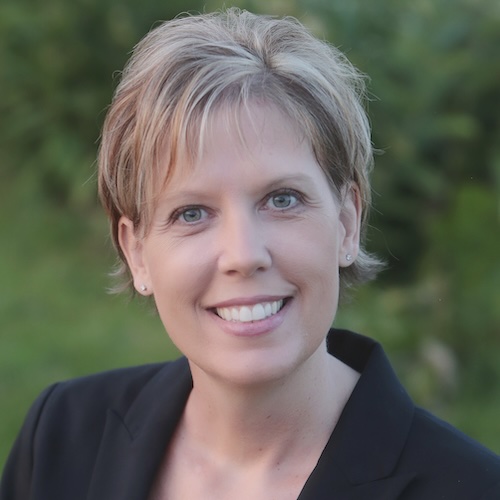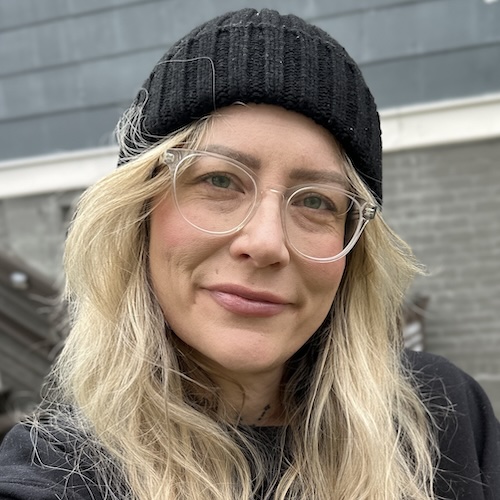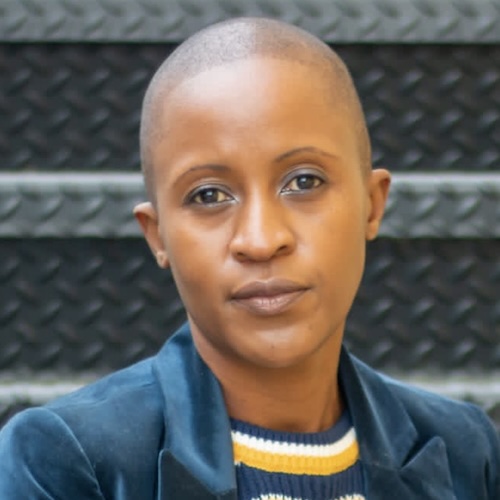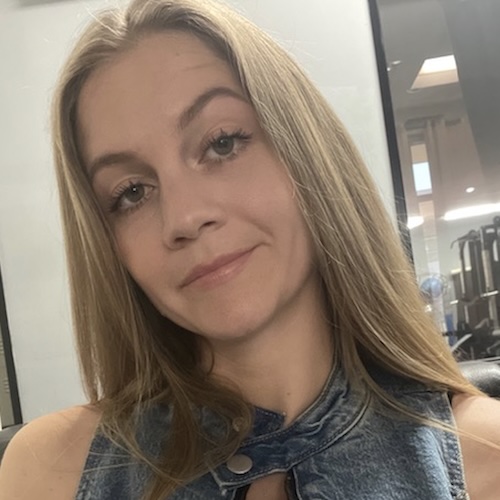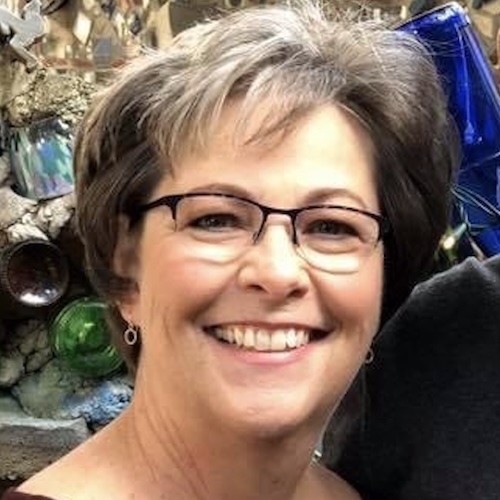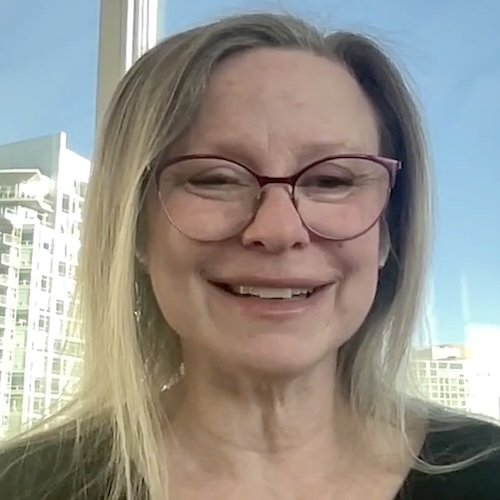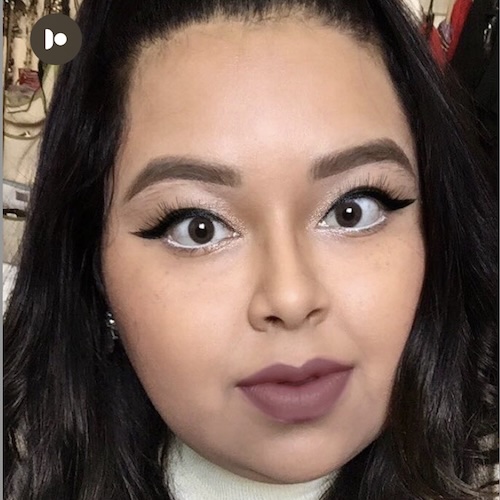Samantha’s Stage 4 ER+ PR+ HER2+ IDC Breast Cancer Story
Interviewed by: Taylor Scheib
Edited by: Katrina Villareal
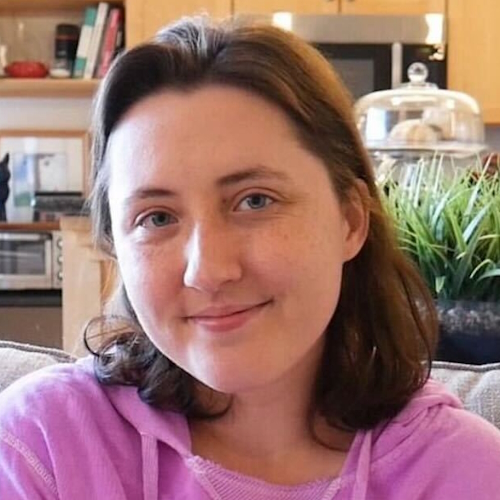
Samantha’s journey with stage 4 breast cancer began in March 2019 when she was 22. Living in Virginia with her husband and young daughter, she first noticed a lump in her breast. Initially dismissed by her primary care physician and an ultrasound tech as an infection, a biopsy eventually confirmed her cancer diagnosis. Despite the initial belief that her cancer was at stage 1, further tests revealed it had spread, making it stage 4 breast cancer.
Her treatment plan involved chemotherapy, which she had to stop early due to severe neuropathy, followed by a lumpectomy, radiation, hormone therapy, and targeted therapy. Despite significant side effects, she managed to maintain no evidence of disease (NED) for some time. After two years of hormone therapy, Samantha decided to take a break to try for a baby, which led to a successful pregnancy in April 2022.
However, during her pregnancy, she and her family moved to Alaska. While there, Samantha’s cancer recurred, causing severe back pain due to lesions in her spine and pelvis. Unable to travel back to Virginia without stabilizing her spine, she underwent surgery and later radiation before returning to her oncologist for a new treatment plan. She joined a clinical trial involving a new radium drug for bone metastases but had to leave it due to mixed results.
Samantha then resumed hormone therapy and targeted therapy with different drugs than before. Throughout her treatment, she emphasized the importance of careful decision-making, the support of her family, and maintaining a positive outlook.
- Name: Samantha L.
- Diagnosis:
- Breast Cancer
- Invasive ductal carcinoma (IDC)
- ER+
- PR+
- HER2+
- Staging:
- Stage 4
- Initial Symptom:
- Lump in breast
- Treatment:
- Chemotherapy
- Surgeries: Surgery: lumpectomy, spinal surgery (fractured vertebrae)
- Radiation
- Hormone therapy: anastrozole & letrozole
- Targeted therapy: abemaciclib & ribociclib
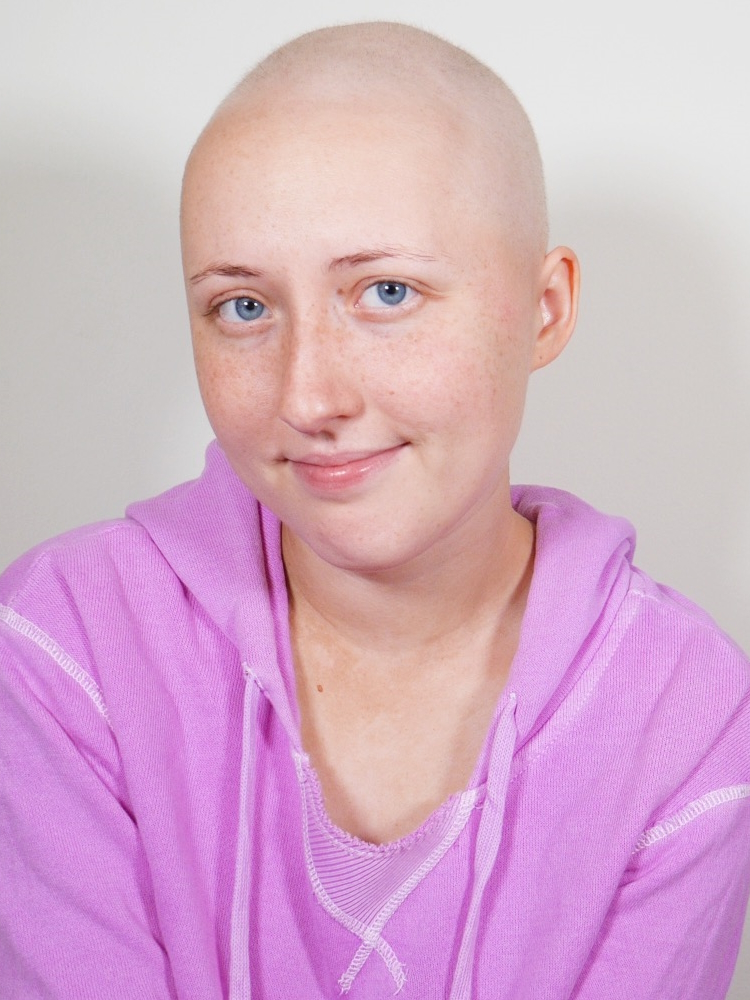
This interview has been edited for clarity and length. This is not medical advice. Please consult with your healthcare provider to make informed treatment decisions.
The views and opinions expressed in this interview do not necessarily reflect those of The Patient Story.
I went to my regular doctor who said it was nothing. I was so young that it couldn’t be breast cancer.
Introduction
My husband and I live in Virginia and have a 1-½-year old daughter. I was diagnosed with stage 4 breast cancer at 22 in March 2019.
Pre-diagnosis
Initial Symptoms
It was the day after Valentine’s Day. My husband and I weren’t married yet. He was my boyfriend at the time. My mom loves to celebrate Valentine’s with the family. The celebration had ended and we were watching TV. He hugged me from behind and squeezed me tight. When he did, I felt some pain in my left breast. I realized there was a lump.
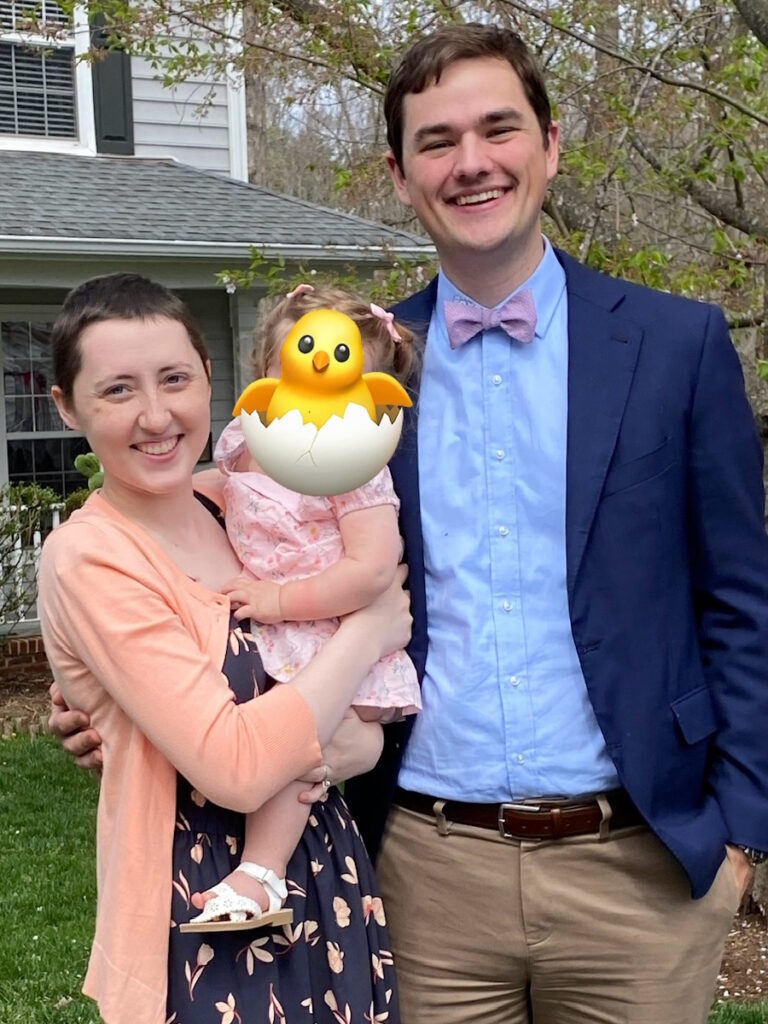
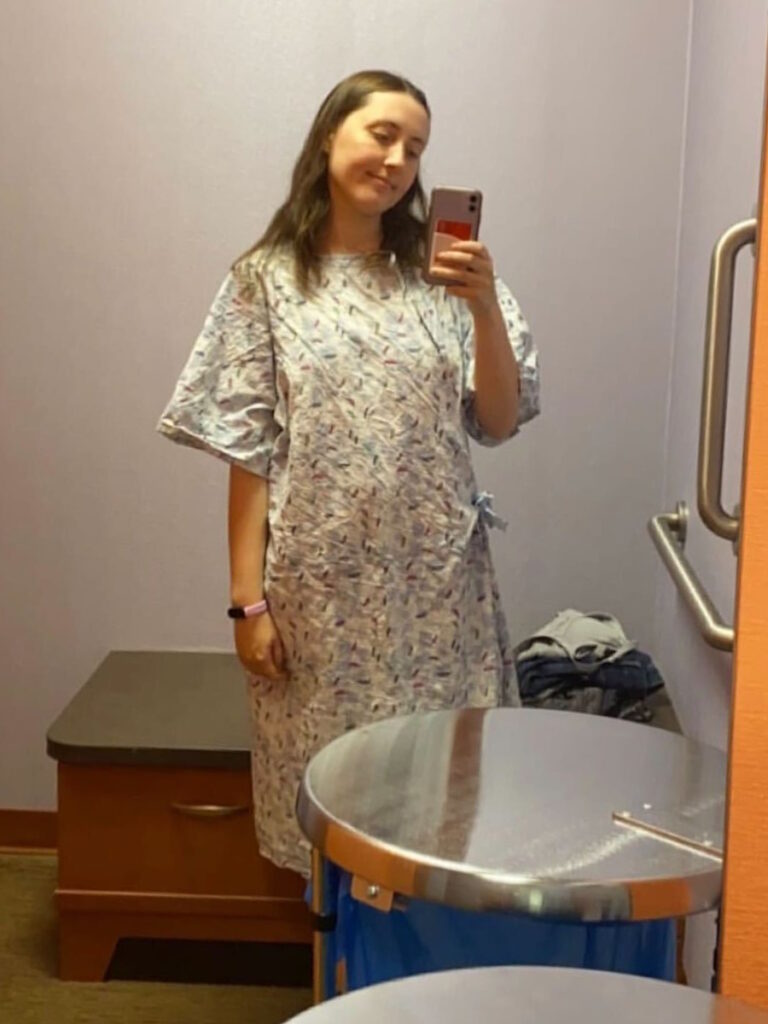
PCP Appointment
I went to my regular doctor who said it was nothing. I was so young that it couldn’t be breast cancer. They told me to put a warm compress on it, but that didn’t do anything. They put me on antibiotics thinking it was an infection and, of course, that didn’t help.
They finally sent me for an ultrasound and the ultrasound tech looked at it and said, “This looks like an infection. You’re 22 and I’ve never seen breast cancer in a 22-year-old, so that’s not what it is. But just in case, you can get a biopsy if you want.”
Getting a Biopsy
I almost left the hospital and went home without doing anything about it. He said it wasn’t urgent, but there was an opening so I got the biopsy done.
When you’re 22 and recently graduated college, cancer is not on your mind at all.
Diagnosis
Biopsy Results
The results revealed abnormal cells, so I had to go in for a second biopsy. That was the one that told us that I had breast cancer.
Reaction to the Diagnosis
When you’re 22 and recently graduated college, cancer is not on your mind at all.
My breast surgeon called me on the day the abnormal cells came back and said, “You need to come in again.” I went in and that’s when she started to prepare me that it could be cancer. She ended up calling me when she found out that it was.
She told me she cleared out an appointment for me at the end of the day and that we should get more information about the hormone receptors at that point. She scheduled an appointment so that I could talk to my family and get all of our questions written down before the appointment.
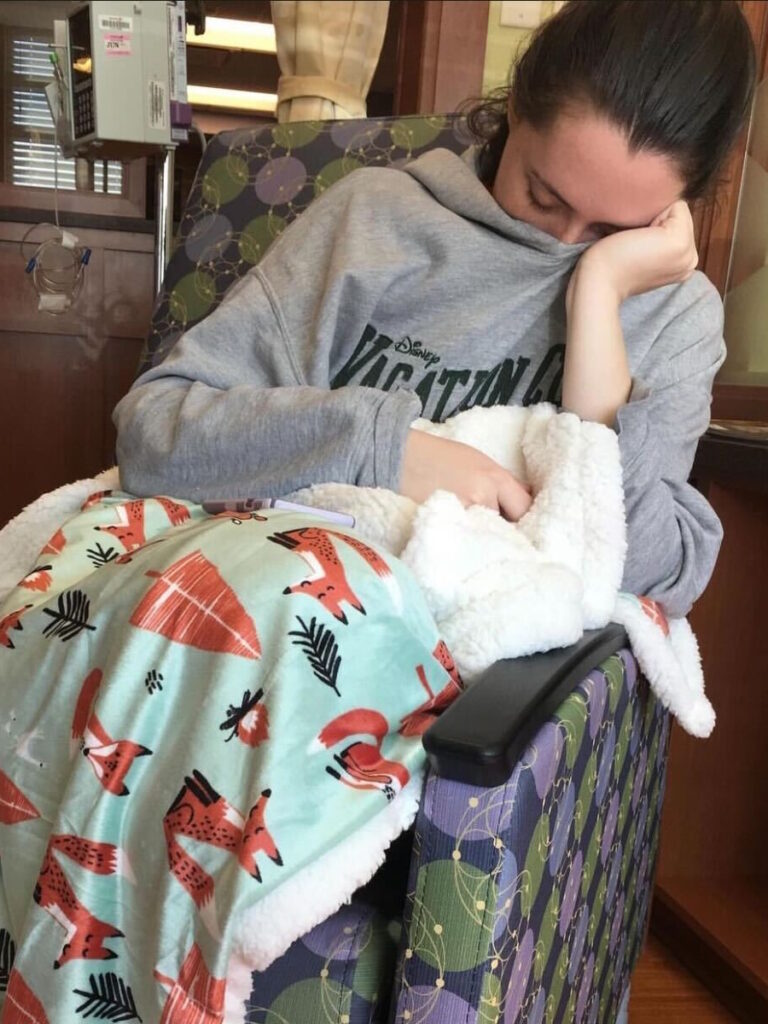
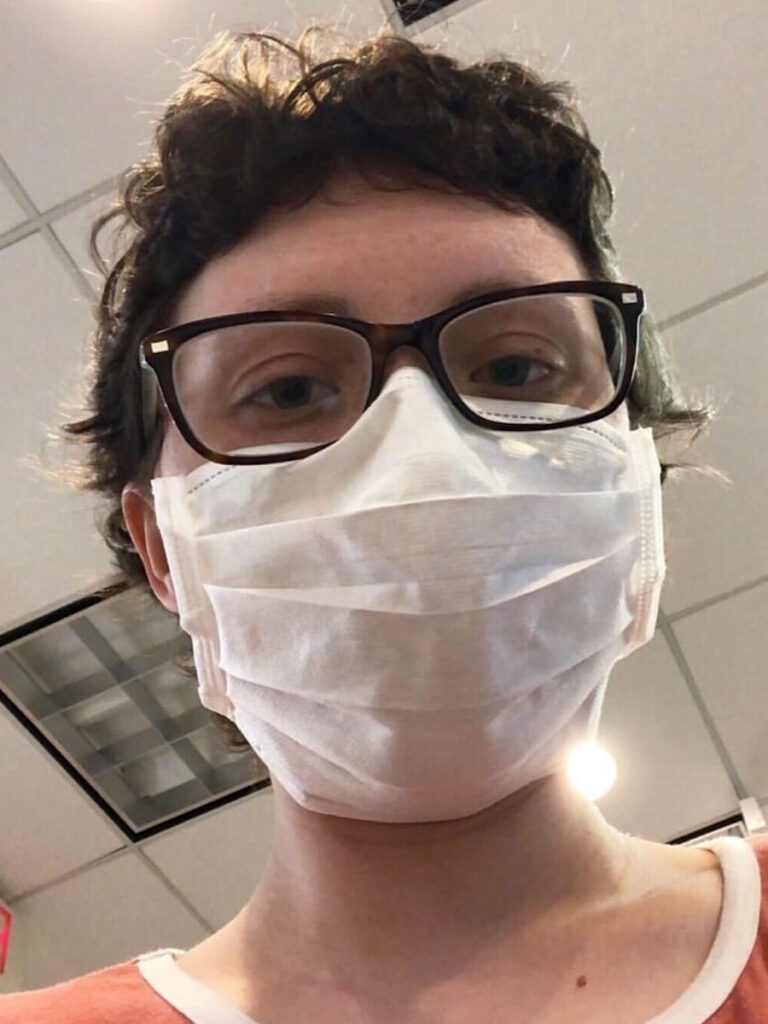
Treatment
Discussing the Treatment Plan
I didn’t know anything. I thought it was stage 1. I went through it in stages, always thinking that it was the least concerning thing. I don’t think there’s a big shock. It came about over time as we had more questions and learned more about it.
She was suspicious right when I walked in. She wanted to check the lymph nodes under my arm because that’s the first place cancer spreads. My boyfriend, my parents, and a friend who’s a doctor came to the appointment with me. They all had questions and wanted to help me and know everything. They went into a separate room and she took me back and did the biopsy under my arm.
When we went back, she laid out a plan. It was March and she said we should be done with all active treatment by Christmas. She said the standard is chemotherapy and then surgery, which was going to be a lumpectomy or a mastectomy, and then radiation. Since my cancer was hormone-positive, I would be on hormone therapy for some years after.
The spot was more contained. They said it was probably cancer because the chemo shrunk it. Then we realized I was stage 4 breast cancer.
Chemotherapy
There were a few hiccups. I had to stop chemo early because Taxol (paclitaxel) was causing neuropathy in my fingers. It got too bad and my oncologist didn’t want permanent nerve damage to happen. I was a little bummed about stopping Taxol early because it made me feel like I wasn’t doing everything that I could, but it’s what happens when your side effects get too bad.
Originally, all of my doctors wanted me to do a double mastectomy because I was young. Younger women tend to choose a double mastectomy because it gives people peace of mind to make sure all of the breast tissue is removed and there’s no place for cancer to grow.
I had a scan where they saw a spot in one of my ribs. They weren’t positive it was cancer and it was in a weird location that they wouldn’t be able to biopsy it. We talked to neurosurgeons about removing it, but we weren’t sure if it was cancer.
When I had chemo and scans again, the spot was more contained. They said it was probably cancer because the chemo shrunk it. Then we realized I was stage 4 breast cancer.
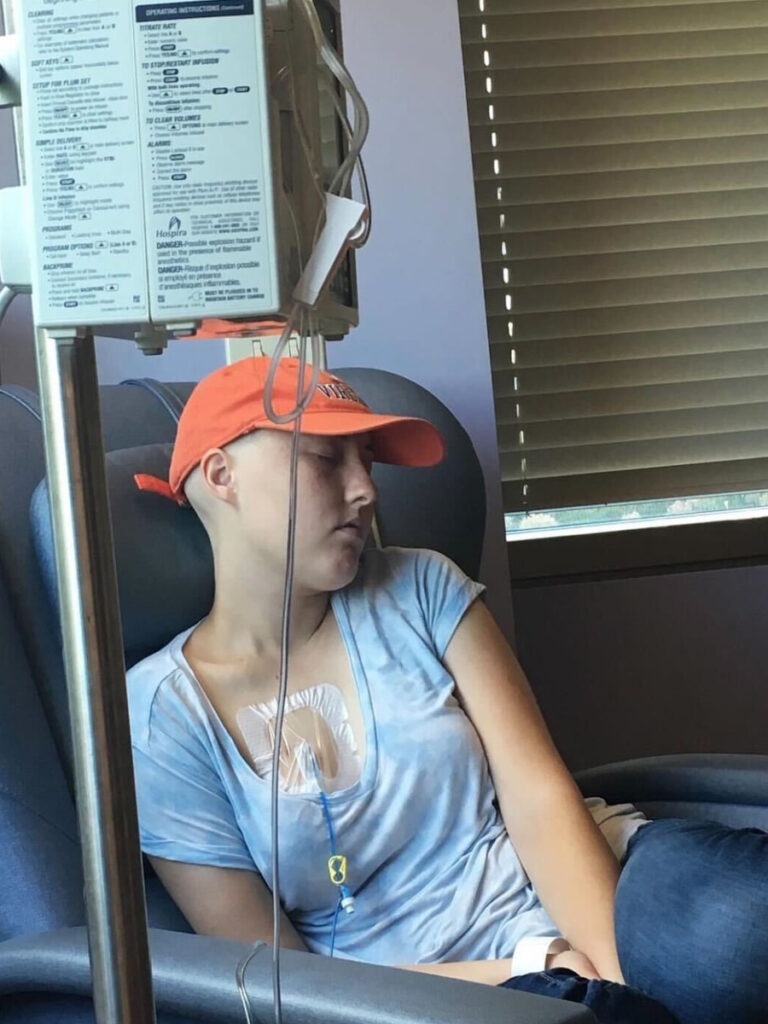
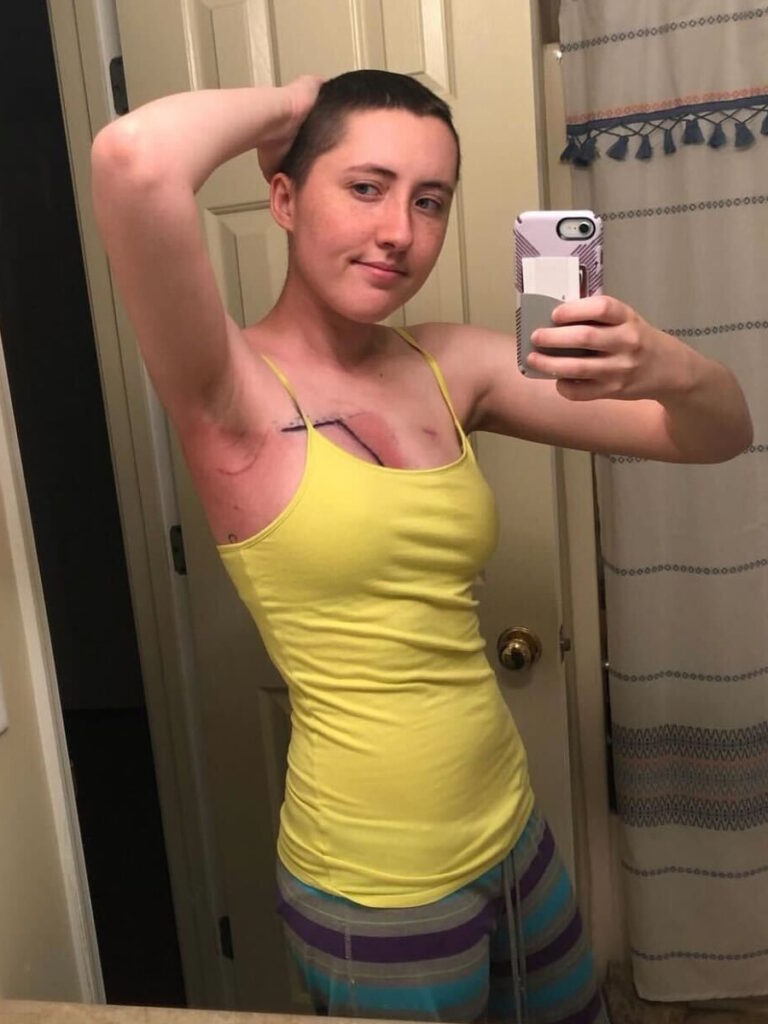
Lumpectomy
At this point, mastectomy isn’t going to matter too much because the cancer has already spread past the breasts. If I do a lumpectomy, the recovery time is shorter so I could get started with radiation immediately after. They wanted to do radiation on the rib to target the spot that was seen in the scan since it couldn’t be removed with surgery.
I ended up doing a lumpectomy, which is weird because when you think about cancer when you don’t have it, you think you’d do the most drastic option possible. But when you’re faced with your options, you’re not always picking that for yourself and your situation.
Radiation
After the lumpectomy, I did radiation and finished that in November.
My case wasn’t as bad of a stage 4 breast cancer case, so we were hopeful that I was cured at that point and that getting pregnant would be fine.
Hormone Therapy & Targeted Therapy
I started hormone therapy and targeted therapy after radiation and did that for two years. Since I had radiation on that tiny spot on my rib, I had no evidence of disease (NED) on scans.
I was having a lot of side effects with hormone therapy and targeted therapy. Being NED for so long, I didn’t even know if these therapies were doing anything or just making me miserable. It was causing a lot of physical and mental side effects that were the hardest time in my life so far. Way harder than chemo, radiation, and the rest of it.
I wanted to stop early. My oncologist wanted me to get to three years, but I could only make it two.
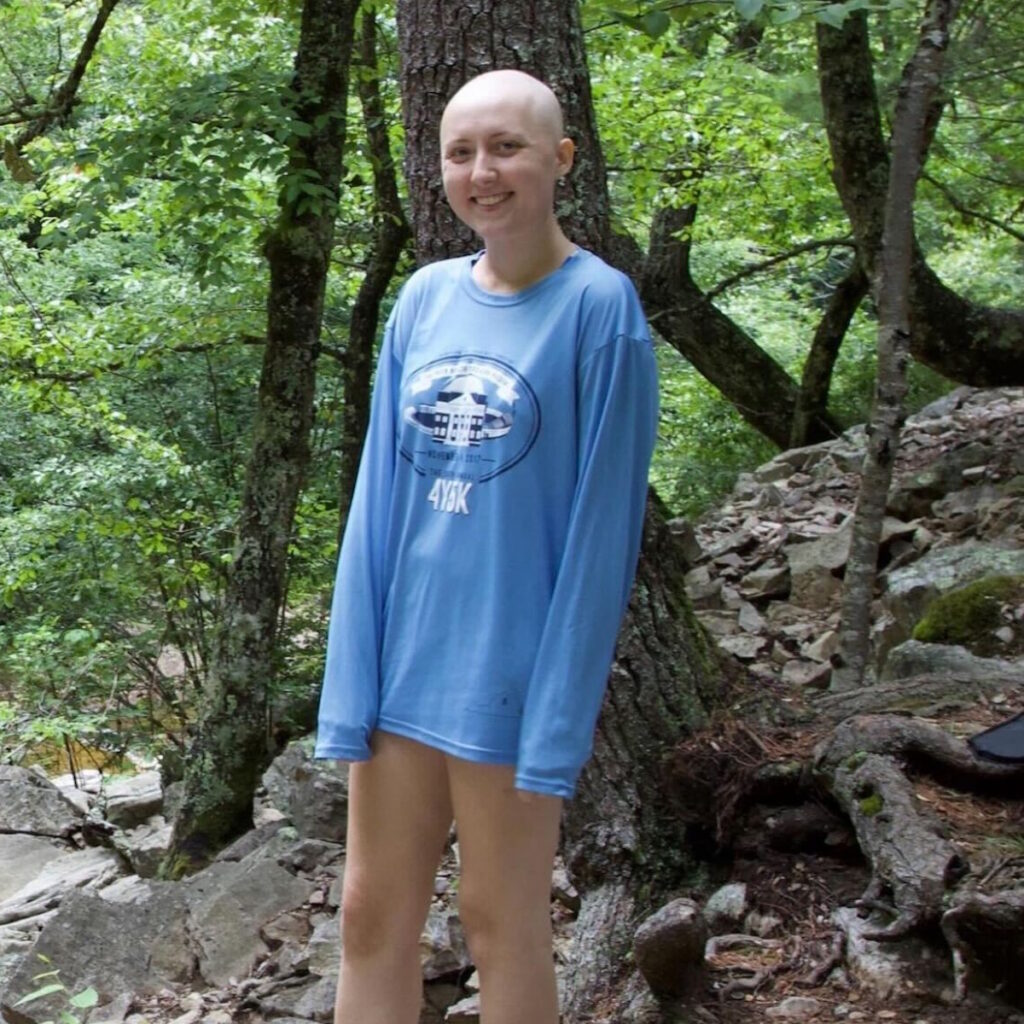
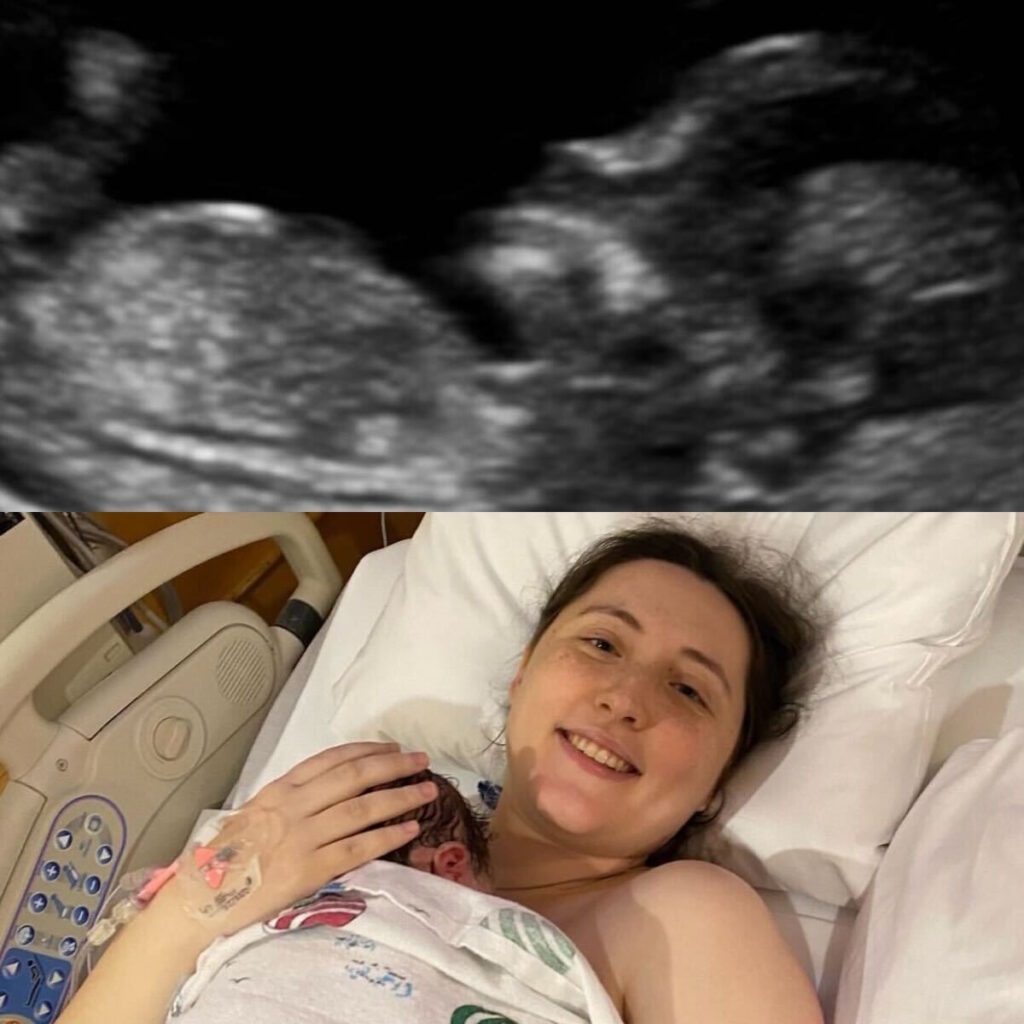
Fertility Post-Treatment
I wanted to try having a baby so I asked him. He cited some recent studies about women who had breast cancer, stopped hormone therapy after two years, took a break, got pregnant, and then went back on treatment. The chances of their cancer reoccurring didn’t increase. Some people had their cancer come back and some people didn’t, but getting pregnant didn’t affect that.
However, the study was for stage 3 and below and not stage 4 breast cancer. Since I only had a tiny spot of cancer and it wasn’t in multiple places throughout my body, my case wasn’t as bad of a stage 4 breast cancer case, so we were hopeful that I was cured at that point and that getting pregnant would be fine.
I got off hormone therapy and targeted therapy. I started in November 2019 and ended in October 2021. I wasn’t having periods the whole time and then my cycles returned to normal. I felt amazing. I think it was because I wasn’t on hormones anymore. Then I got pregnant in April 2022.
You can’t let the fear of cancer coming back control your life. You can’t make every decision based on whether your cancer comes back or not.
Pregnancy was great. I still had all of the same pregnancy side effects, like nausea, but I was so used to being nauseous from treatment that it didn’t affect me. I just felt good that I wasn’t on medication. There were lingering side effects from both chemotherapy and targeted therapy. I still have hot and cold sensitivity in my fingers, toes, ears, and teeth. I have dry eyes.
It can be difficult because people don’t want their cancer to come back. They don’t want their child to be left without a mother. That’s the main worry people have. My philosophy on it is that you’re not a statistic. You don’t know what could happen in your life and you can’t let the fear of cancer coming back control your life. You can’t make every decision based on whether your cancer comes back or not.
If I can, then I will. If I feel good, then I’m going to do this or that. It’s not a decision that I made easily. My husband and I talked through it and we spoke to our doctor about it. We did what was best for him and what was best for our family specifically. It’s not for everybody. You have to figure it out for yourself.
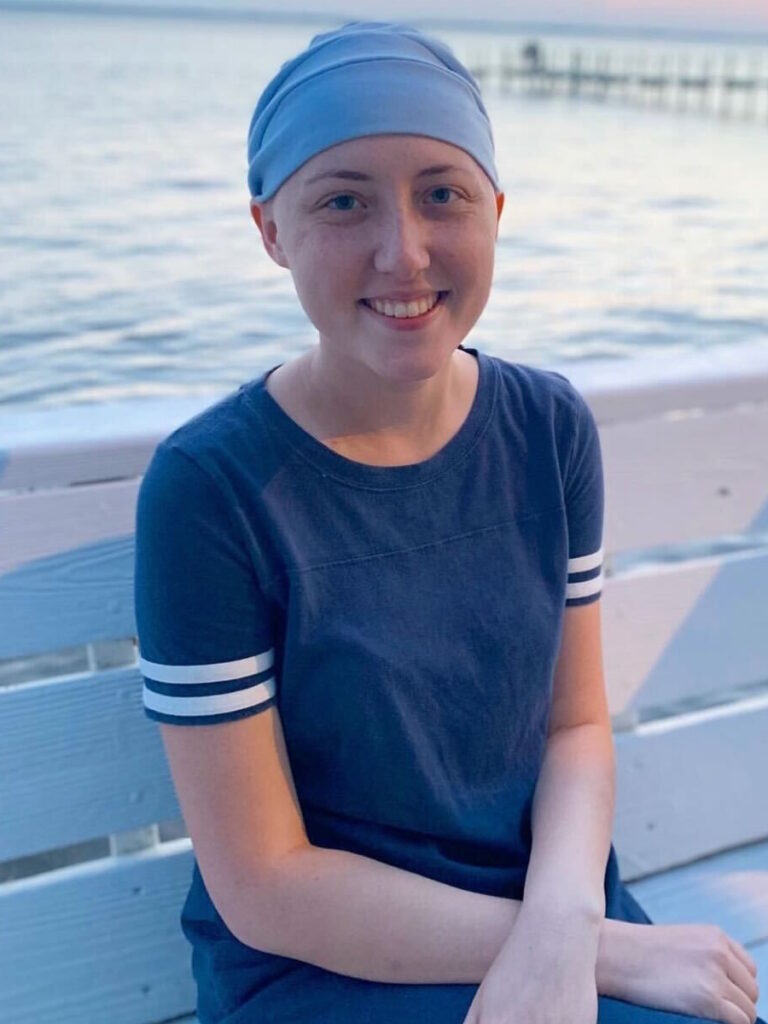
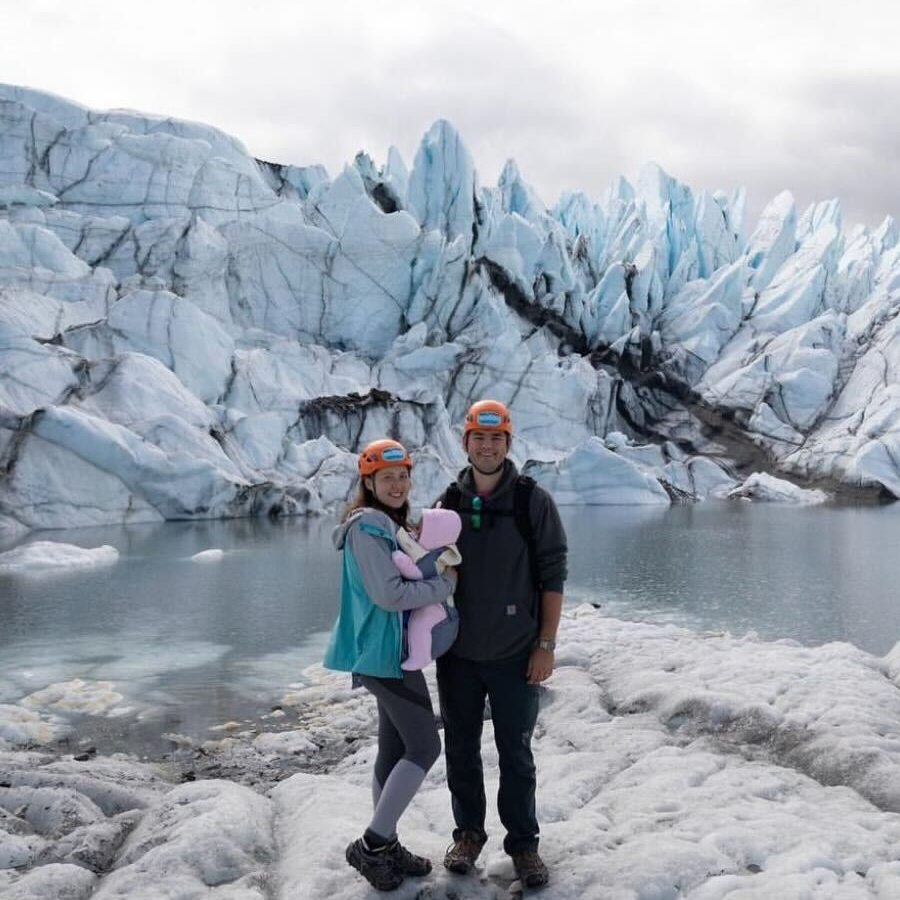
There are all these medical questions that you need to ask your doctor, but it can be a good thing and possible. There’s a lot of new research coming out. You don’t have to be afraid of having hormones in your body after having hormone-positive cancer.
Moving to Alaska
In the middle of my pregnancy, we moved to Alaska, so we were away from my oncologist for a while. I was still keeping in touch with him, but we were hopeful that I was cured since I had scans that showed no evidence of disease for so long after my daughter was born. I was breastfeeding, so we didn’t do a lot of monitoring because I was still feeling good and there were no new symptoms.
Several lesions throughout my spine and pelvis were found on the MRI.
Cancer Recurs
We were on a mountain one day taking family photos when I collapsed to the ground. My back hurt so bad that I couldn’t get up. Five guys had to carry me to the car. I went to the ER that day and eventually had a scan. The results showed a fracture in my spine because there was cancer growing in it, crushing the vertebrae, and causing the pain. Several lesions throughout my spine and pelvis were found on the MRI as well.
I couldn’t get on a plane to fly back to Virginia because they were worried that if something shifted, I could be paralyzed, so I needed to have surgery to stabilize my spine before moving back. We couldn’t even think about treating the cancer until that happened. It was scary because we weren’t doing anything to address the cancer.
I had surgery in the middle of August followed by a very painful recovery. I was already in a lot of pain beforehand, but I needed two weeks of recovery. When we got to Virginia, I met with my oncologist and came up with a new plan.
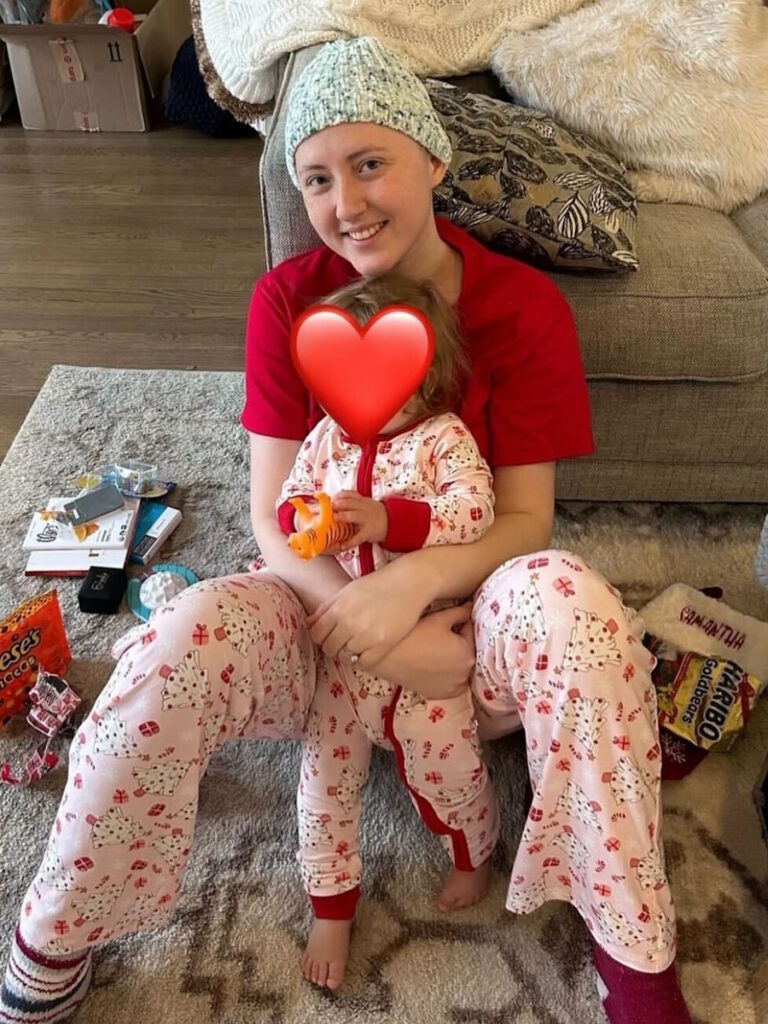
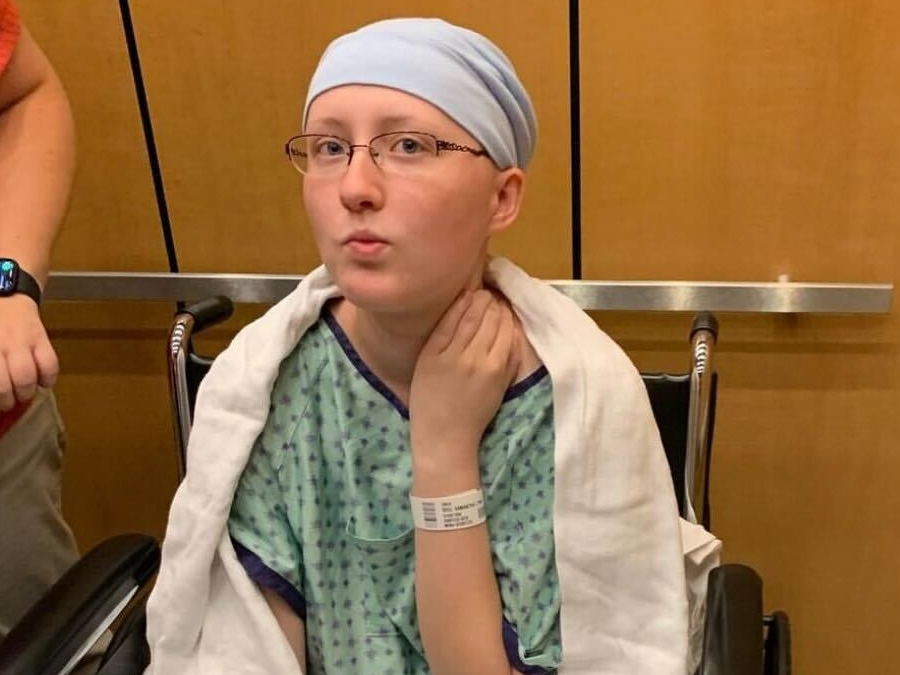
New Treatment Plan
They thought I needed radiation on the vertebra that had the fracture because there were other spots throughout my spine and pelvis, but that was the biggest and causing the most problems. We did three rounds of radiation on that first.
My oncologist knew that hormone therapy and targeted therapy made me miserable, so he gave me three options. He said I could go on hormone-targeted therapy, I could take a chemo pill called Xeloda (capecitabine), or I could get on a clinical trial.
I couldn’t start the trial until 14 days after my last radiation, so for two weeks, I wasn’t doing anything and I could feel things getting worse.
Joining the Clinical Trial
He was excited about the clinical trial because it used a new radium drug targeting bone metastases. It was already an approved treatment for prostate cancer with lots of success and this trial was testing it on metastatic breast cancer patients. We went with that because he said it could eliminate what’s in my bones.
The problem was that I didn’t know which group I would be in. They were going to tell me, but I was either going to be in the group getting chemo or in the group getting chemo and the radium drug.
That was a stressful time because there was a period when I had to wait to get approved for the trial. I couldn’t start the trial until 14 days after my last radiation, so for two weeks, I wasn’t doing anything and I could feel things getting worse.
I ended up in the radium arm of the trial, which was good, and I did that for a while. It helped with my pain a lot and decreased some of the markers in my body.
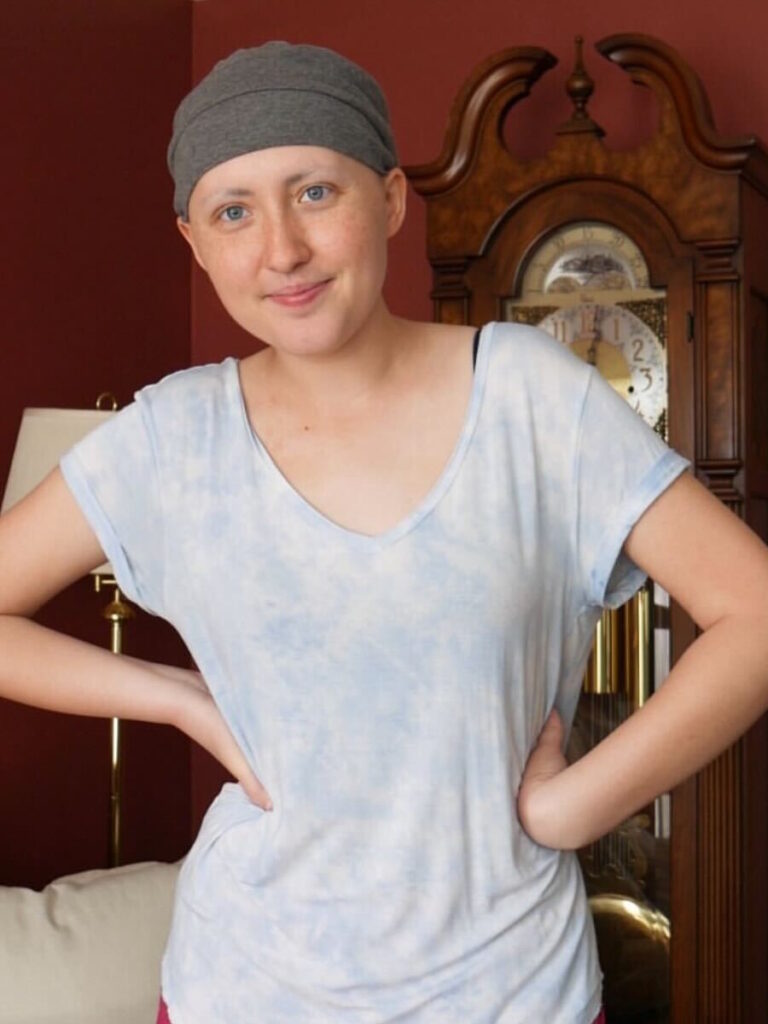
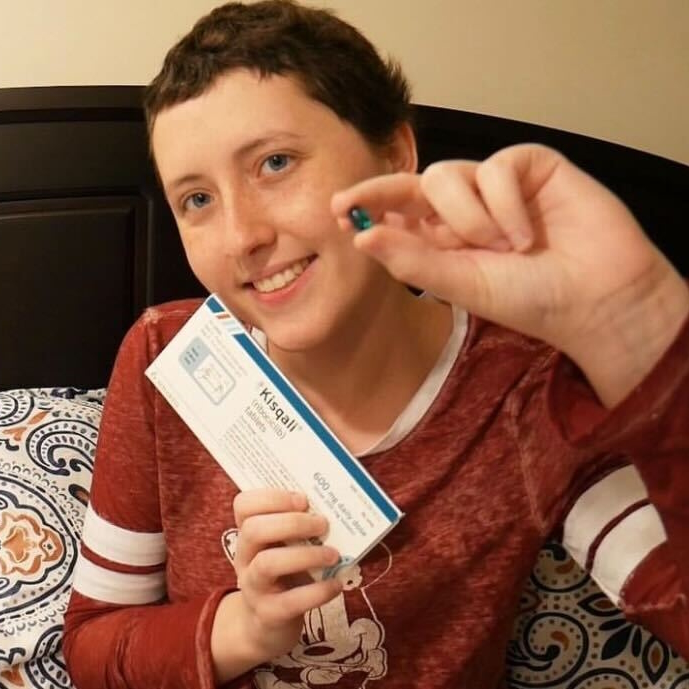
I ended up having to go off the trial because my scan showed mixed results. Some areas were better, but some areas were worse. I think it’s because my original scan was in September and not right before I started the trial. There was that two-week period when things got worse, but there’s no way of knowing if that was it or not.
Hormone Therapy & Targeted Therapy
After the trial, I talked with my husband and my family and decided that I was going to give hormone therapy and targeted therapy another try. My oncologist recommended trying a different drug than what I was on before, so that’s what I’m doing now. I’m on anastrozole and abemaciclib, which is slightly different from the letrozole and ribociclib that I did in 2019.
The whole point of stage 4 treatment is to find a treatment that you can tolerate for the rest of your life.
Treatment Decision-Making
People don’t realize how much thought is put into treatment-decision making. You think about it for days, weeks, and months, talking it through and talking to doctors. I think that experience was good because it led me to my decision and made me realize that I’m exactly where I should be.
Having a Strong Support System
I have a supportive husband and family who help talk through things with me. I think about things a lot, pray all the time, and try to get the wisdom to make all these decisions in a way that’s going to be the best for myself, my husband, and my daughter.
It’s not just about patience. It takes a lot of work and it’s not something that you make a split-second decision about. There’s a lot of thinking and praying.
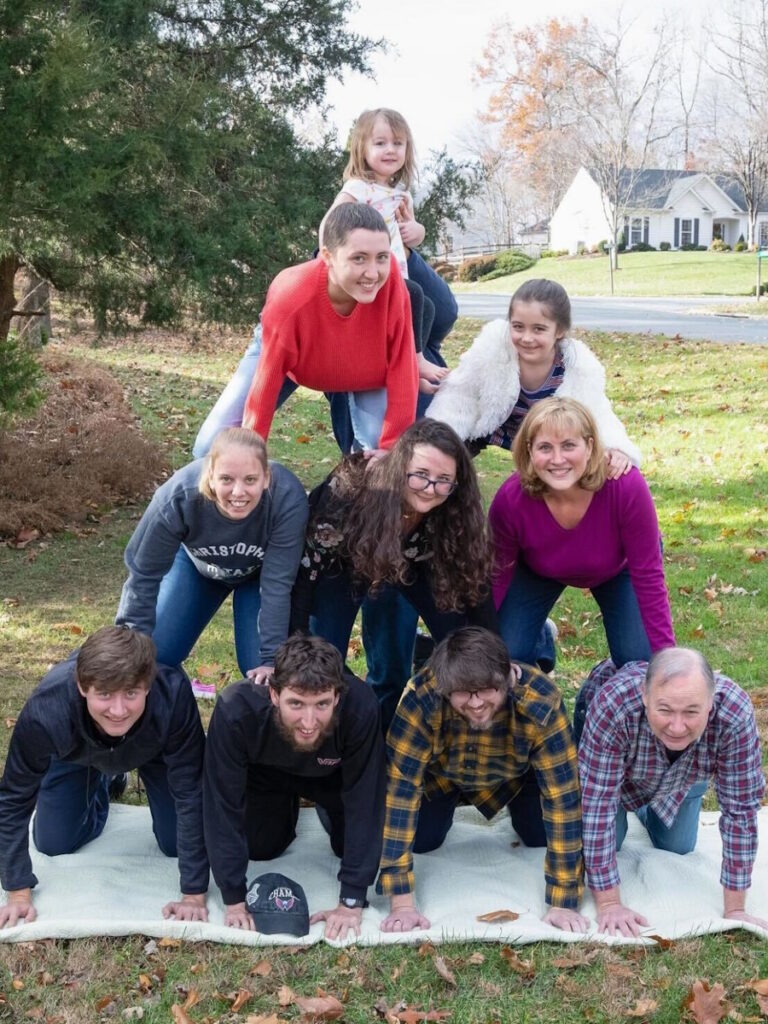
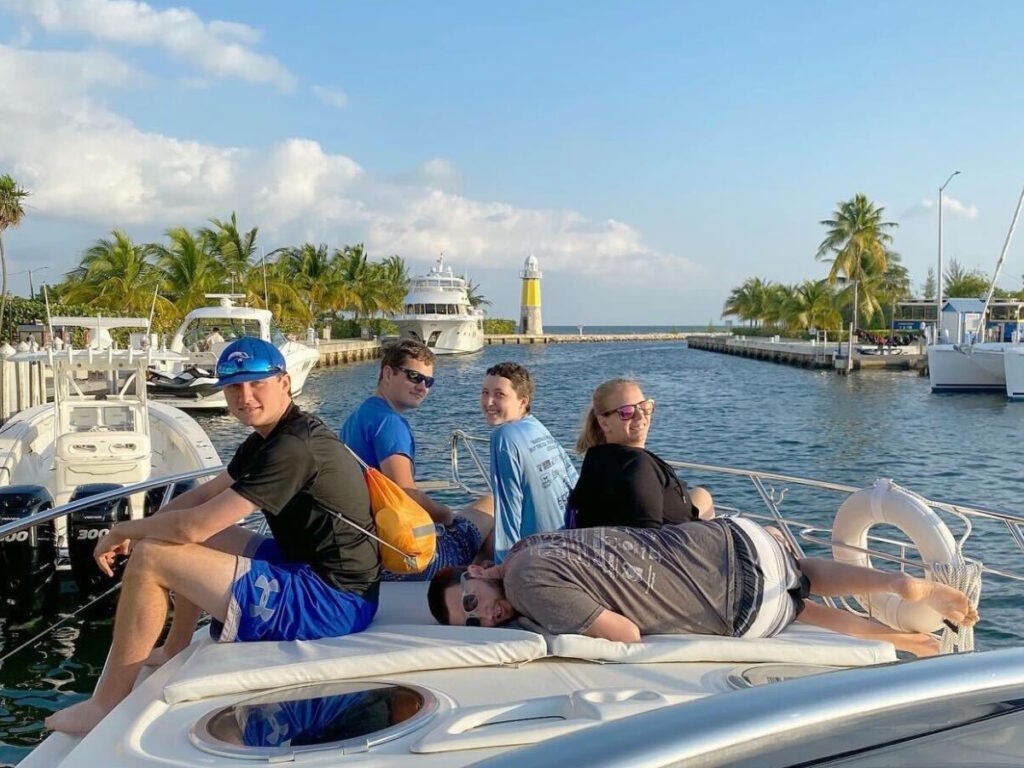
The whole point of stage 4 breast cancer treatment is to find a treatment that you can tolerate for the rest of your life. When we went to a new center, found out all the information, and talked with my oncologist more about whether this was realistically going to be the best option for me, that’s what made us think that this is what’s going to be good.
It wasn’t just me. My husband was so afraid of me being on it again. He knew how much I suffered when I was on it. It affects both of us. Going on it for the second time around was nice. It was working better. I don’t know if it’s because I went through a pregnancy, I’m older, it’s a different drug than before, or if I have a different mental attitude towards it.
If I didn’t have a baby who was so dependent on me, I don’t think I would’ve even considered going back on hormone therapy.
Everything happens for a reason. Some people thought it was a dumb decision for me to get pregnant, but having her is what made me do this treatment in the first place. If I didn’t have a baby who was so dependent on me, I don’t think I would’ve even considered going back on hormone therapy. I would’ve done the chemo pill. It could have worked, but it could not have worked. Having her around gave me this huge drive to live for as long as possible. It’s what made me even try it again in the first place. I wouldn’t have even known that it would be better this time around.
A cancer diagnosis is harder on the family than on the person going through it. Your family loves you. A lot of family members feel like they’re being pushed away and that they’re not wanted. My instinct is to do that because I don’t want to put a burden on them. But at the end of the day, it’s important that they’re there. The best thing that a family member can do is be there and listen. What to say and do is going to be different for everybody, but being there is a good place to start.
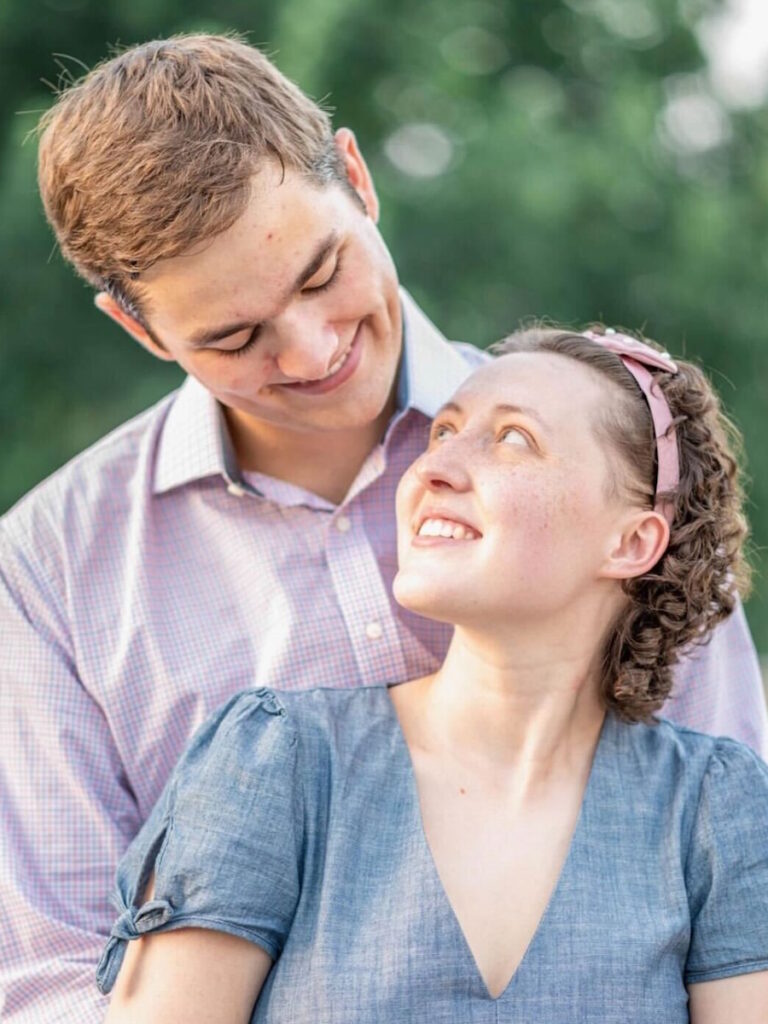
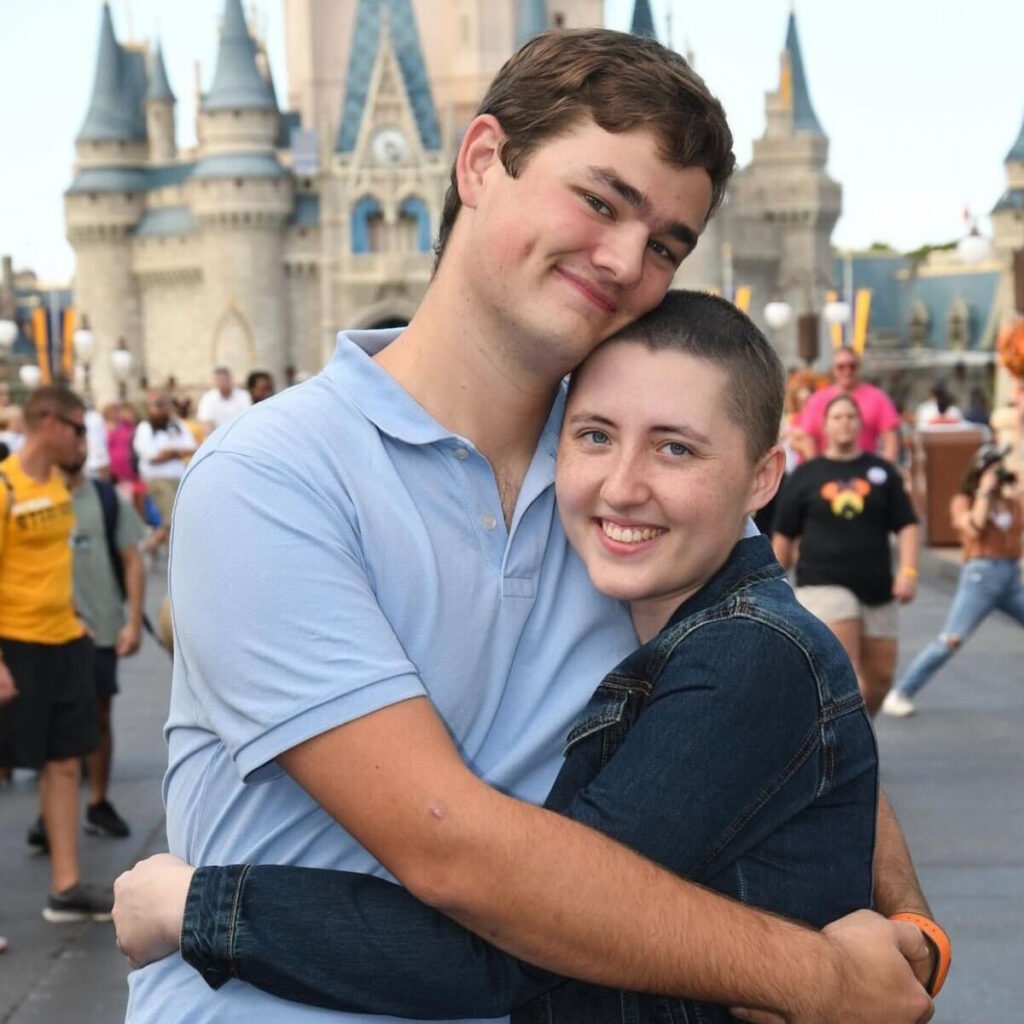
Words of Advice
Don’t wait. If you want to do something, do it. You never know when your life is going to dramatically change. I didn’t realize how much I enjoyed picking up my baby and rocking her to sleep then all of a sudden, it’s taken away from me.
When we moved to Alaska, people asked why we were going. We had an opportunity, so we’re going to move to Alaska for a year. We probably could never do that again because now I need all this treatment so I’m back in Virginia where my original team is.
If you want to do something, do it while you can because you never know when you’re physically not going to be able to do it.
Don’t wait. If you want to do something, do it. You never know when your life is going to dramatically change.

Inspired by Samantha's story?
Share your story, too!
More Metastatic Breast Cancer Stories
Deb O., Breast Cancer (De Novo Triple Positive and ER+ HER-)
Symptoms: First instance: appearance of lump that later on increased in size, orange peel-like skin around inverted nipple, persistent ache under right arm; second instance: appearance of lump
Treatments: First instance: chemotherapy, targeted therapy, hormone therapy; second instance: surgery (mastectomy), chemotherapy, radiation therapy, CDK 4/6 inhibitor
Tammy U., Metastatic Breast Cancer, Stage 4
Symptoms: Severe back pain, right hip pain, left leg pain
Treatments: Surgeries (mastectomy, hip arthroplasty), chemotherapy, radiation therapy, hormone therapy, targeted therapies (CDK4/6 inhibitor, antibody-drug conjugate)
Nicole B., Triple-Negative Metastatic Breast Cancer, Stage 4 (Metastatic)
Symptoms: Appearance of lumps in breast and liver, electric shock-like sensations in breast, fatigue
Treatments: Chemotherapy, surgeries (installation of chemotherapy port, mastectomy with flat aesthetic closure), targeted therapy (antibody-drug conjugate), hyperbaric oxygen therapy, lymphatic drainage
Dalitso N., IDC, Stage 4, HER+
Symptoms: Appearance of large tumor in left breast, severe back and body pain
Treatments: Surgery (hysterectomy), vertebroplasty, radiation therapy, hormone therapy, clinical trial
Marissa T., ILC, Stage 4, BRCA2+
Symptoms: Appearance of lump in right breast, significant fatigue, hot flashes at night, leg restlessness leading to sudden, unexpected leg muscle cramps
Treatments: Chemotherapy, hormone therapy, PARP inhibitor, integrative medicine
Janice C., Triple-Negative Metastatic Breast Cancer, Stage 4
Symptoms: Appearance of lump in left breast near sternum, fatigue, bone and joint pain
Treatments: Surgery (lumpectomy), radiation therapy (brachytherapy), chemotherapy
Dana S., IDC, Stage 4 (Metastatic)
Symptom: Appearance of large lump in left armpit
Treatments: Targeted therapy, hormone blockers, bone infusions
Maria S., Breast Cancer, Stage 4
Symptoms: Intermittent but severe pain including a burning sensation on the side of the breast, appearance of a cyst and a lump, abnormally warm and pink-colored breast, nipple inversion, strangely liquid menstrual periods, unusual underarm odor, darkening and dimpling of the nipple, severe fatigue, night sweats
Treatments: Chemotherapy, surgeries (mastectomy, lymphadenectomy), radiation therapy, targeted therapy
- 1
- 2
